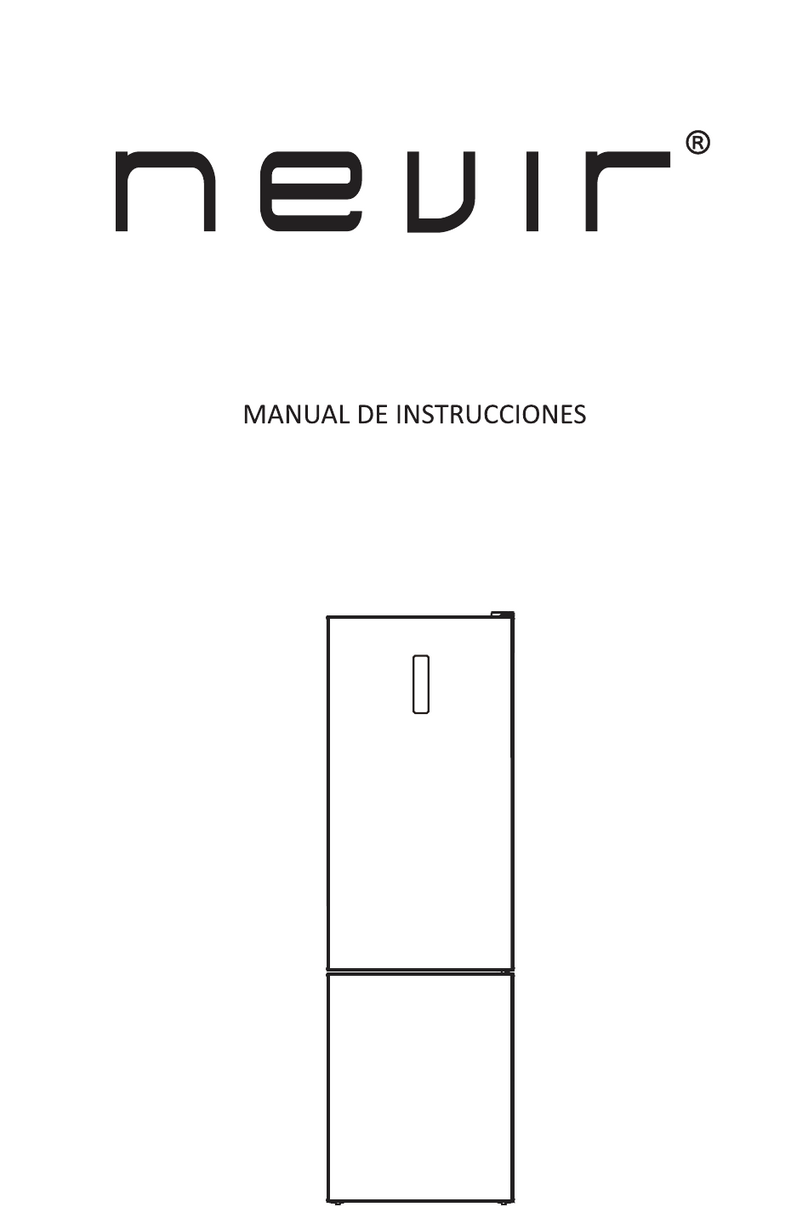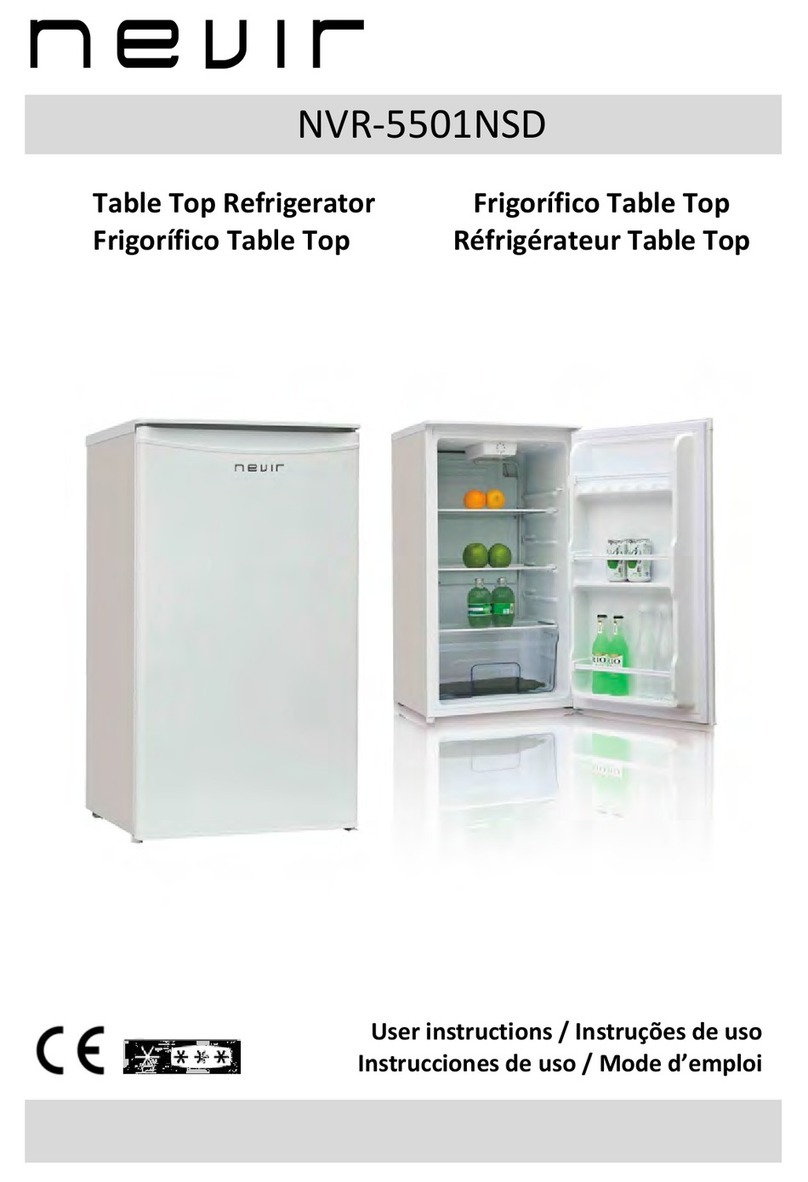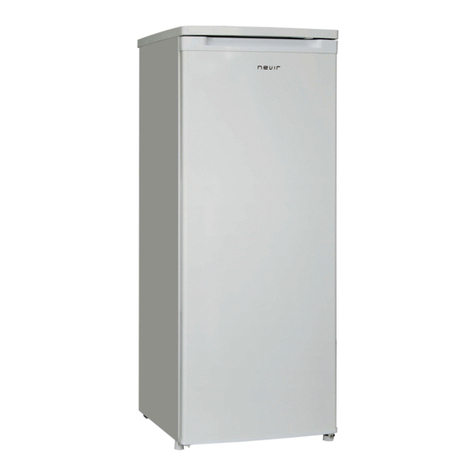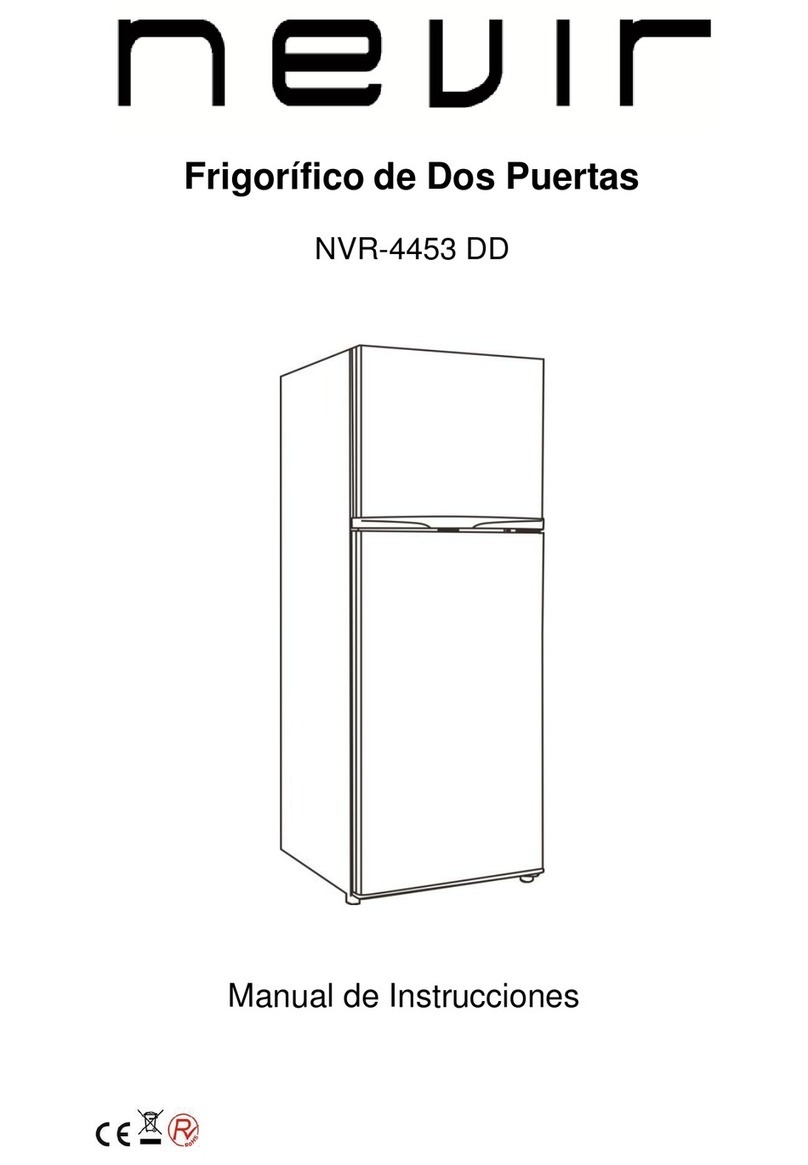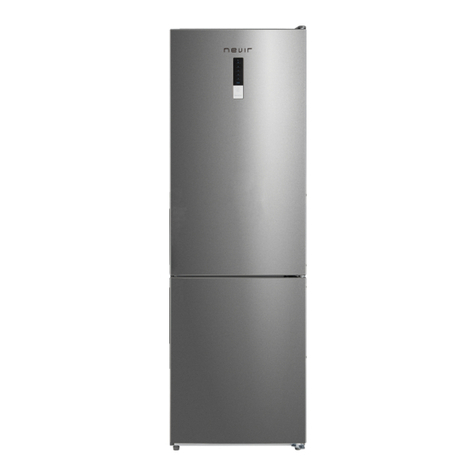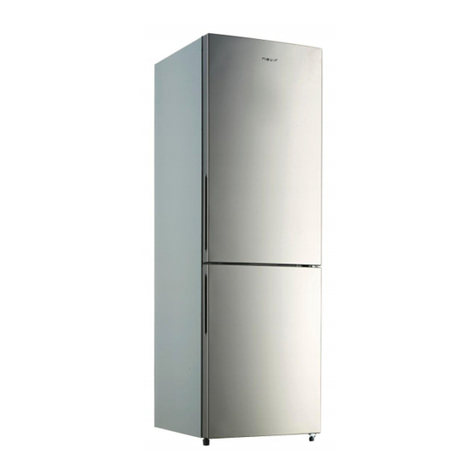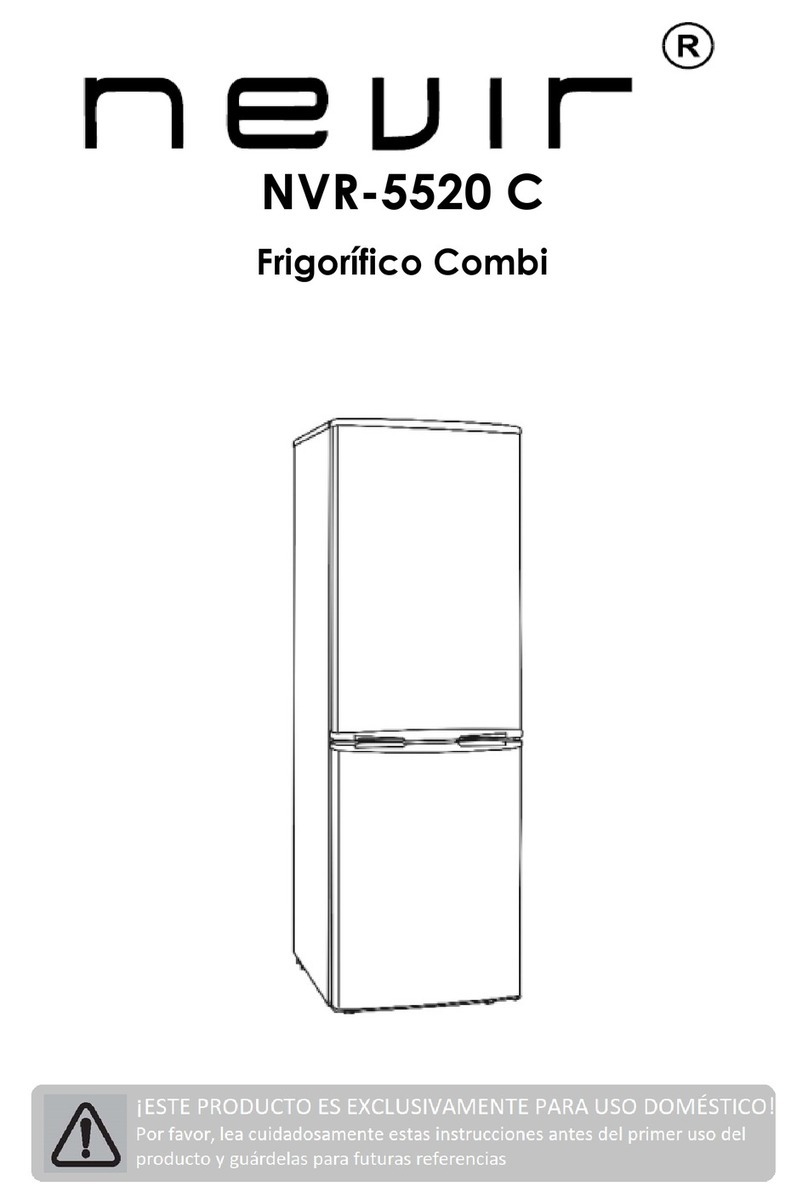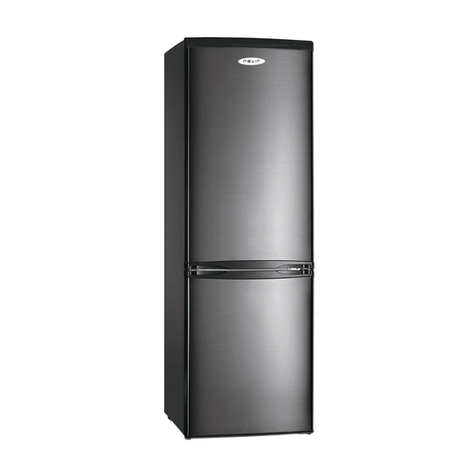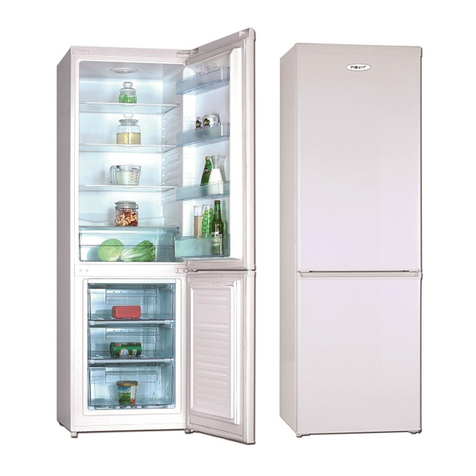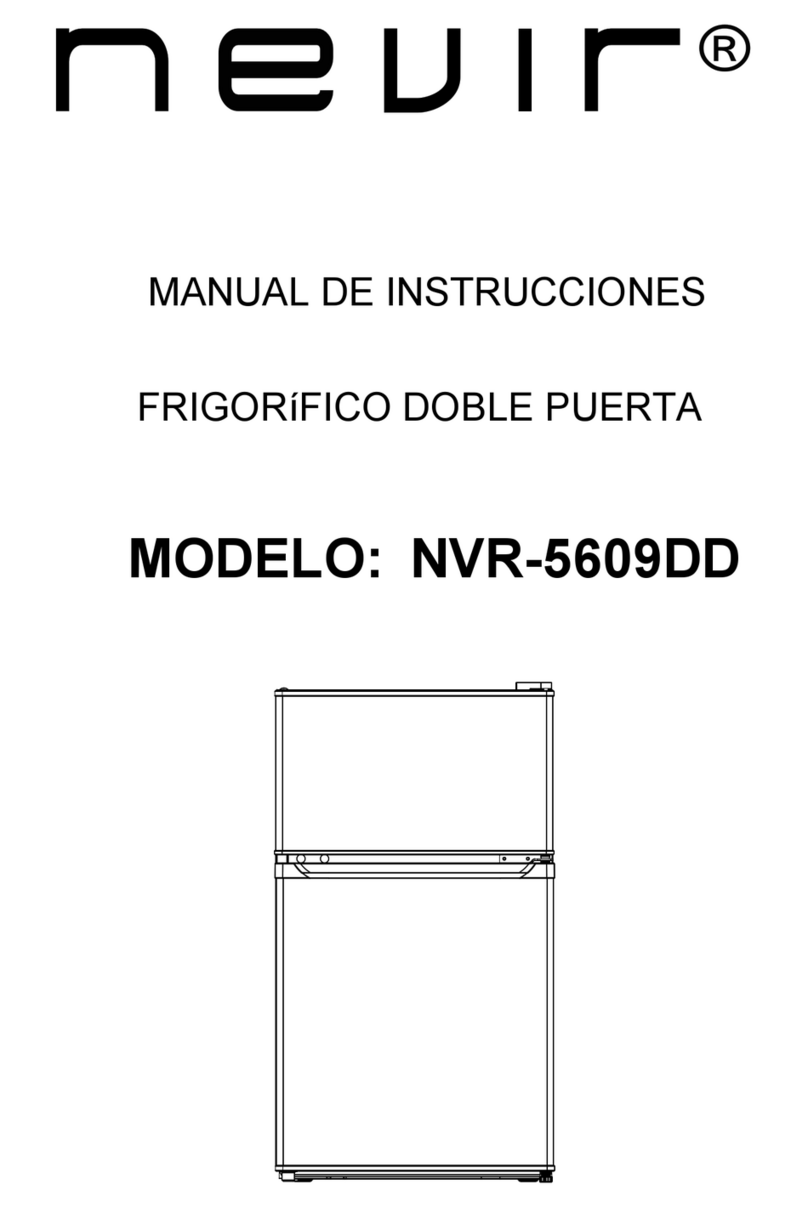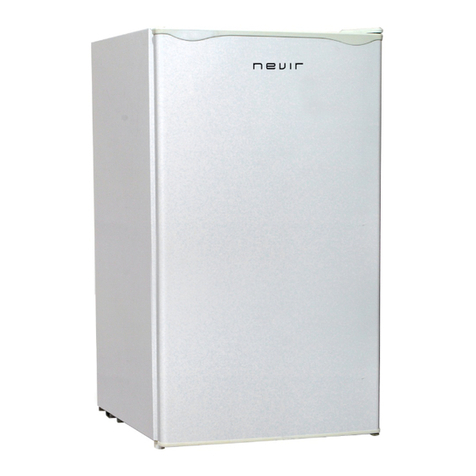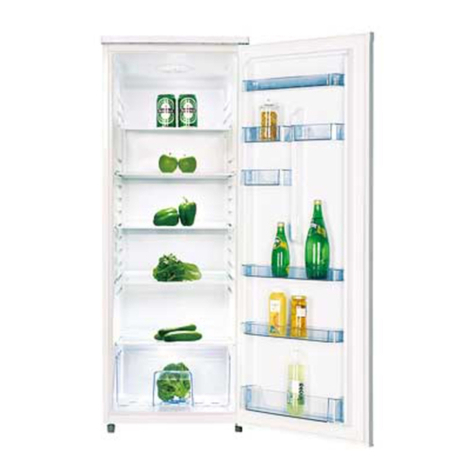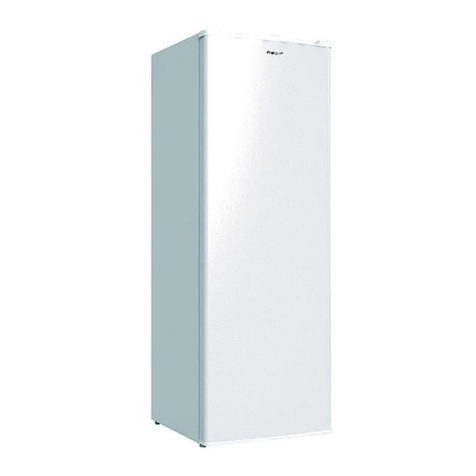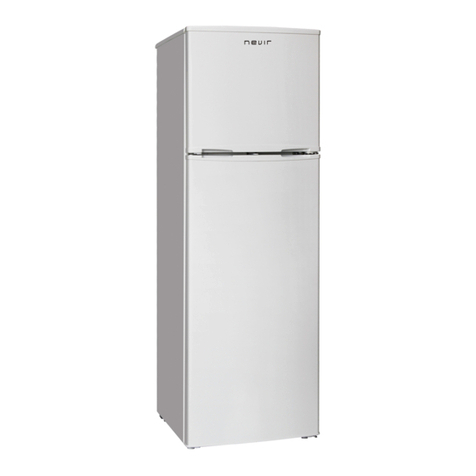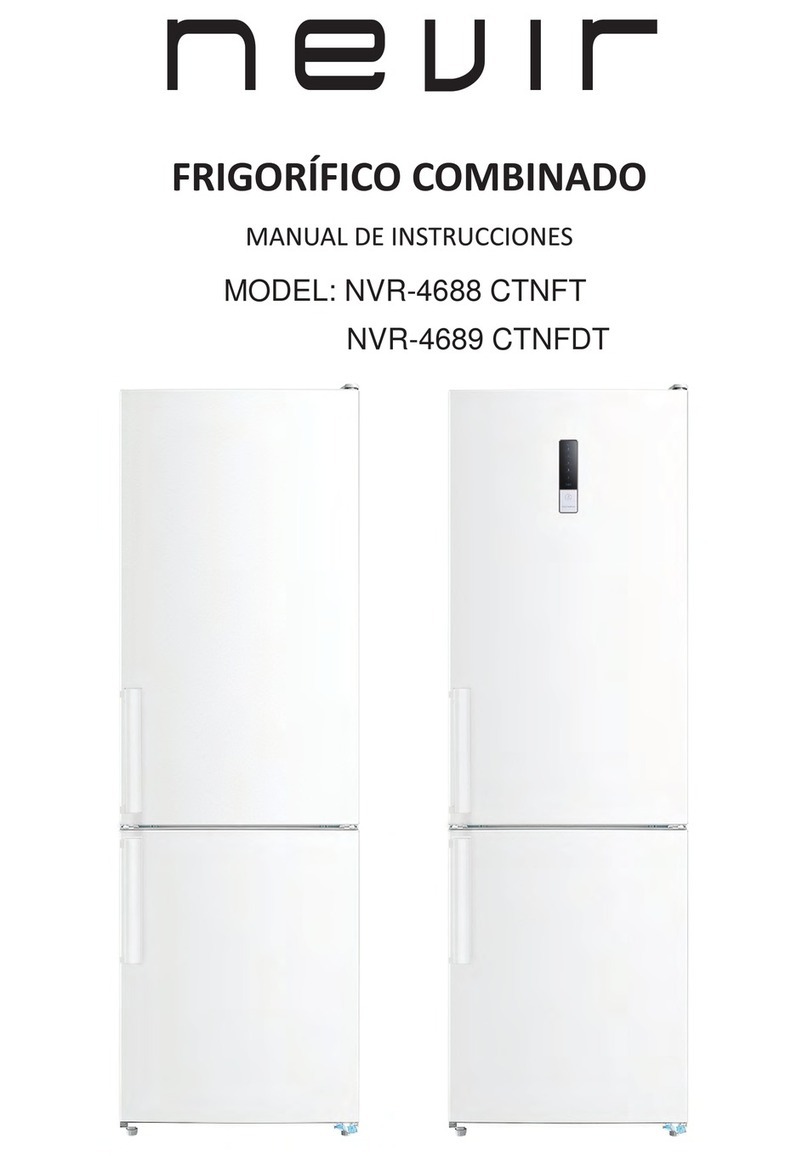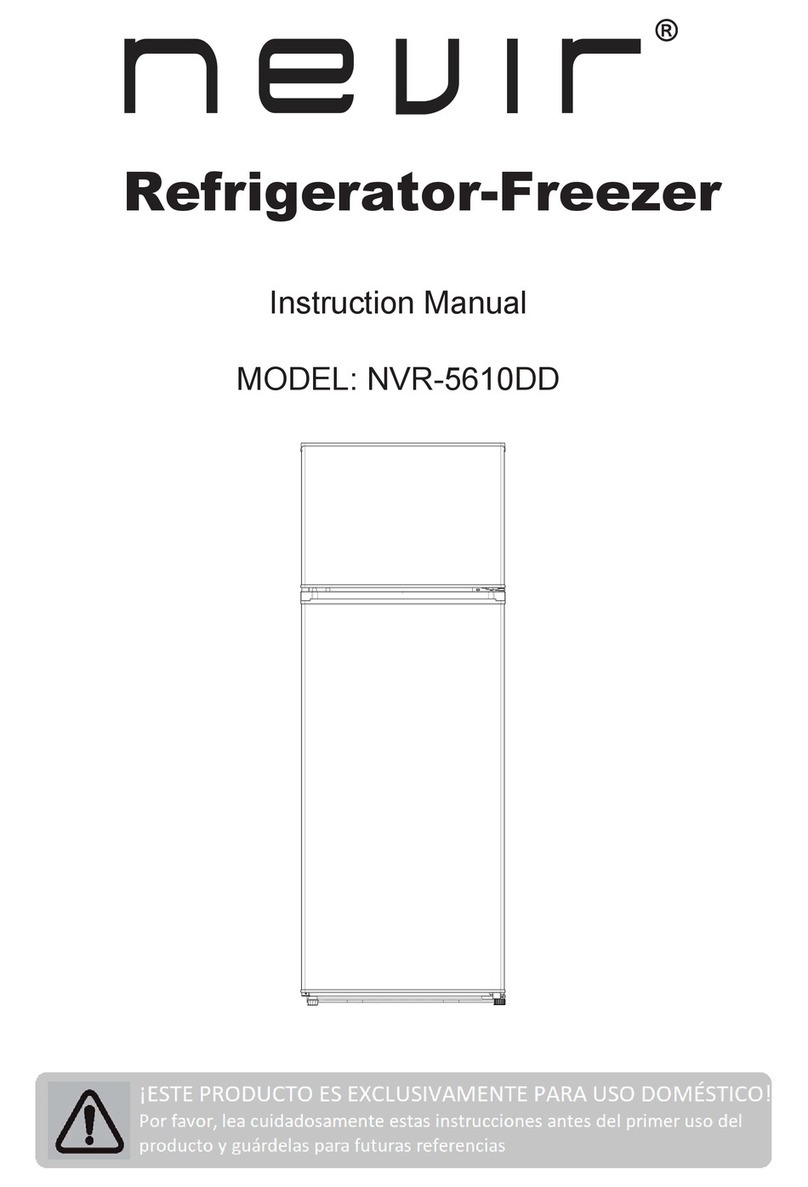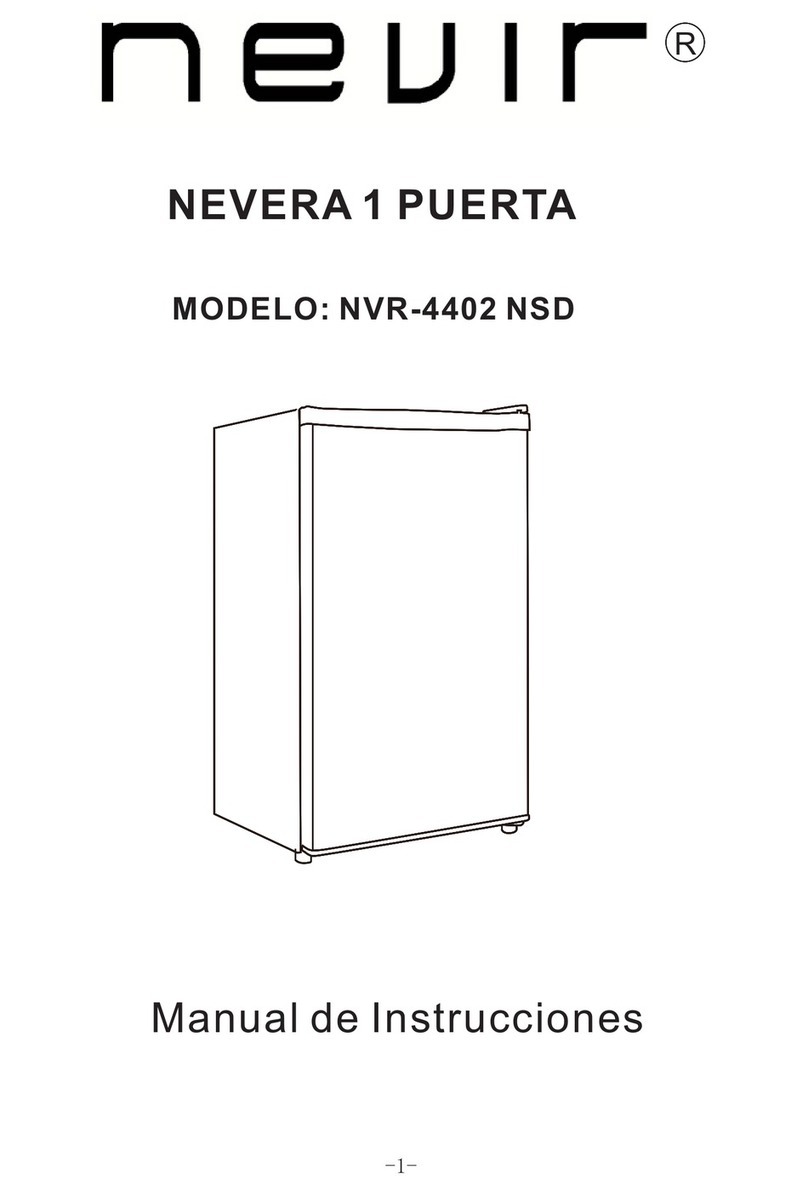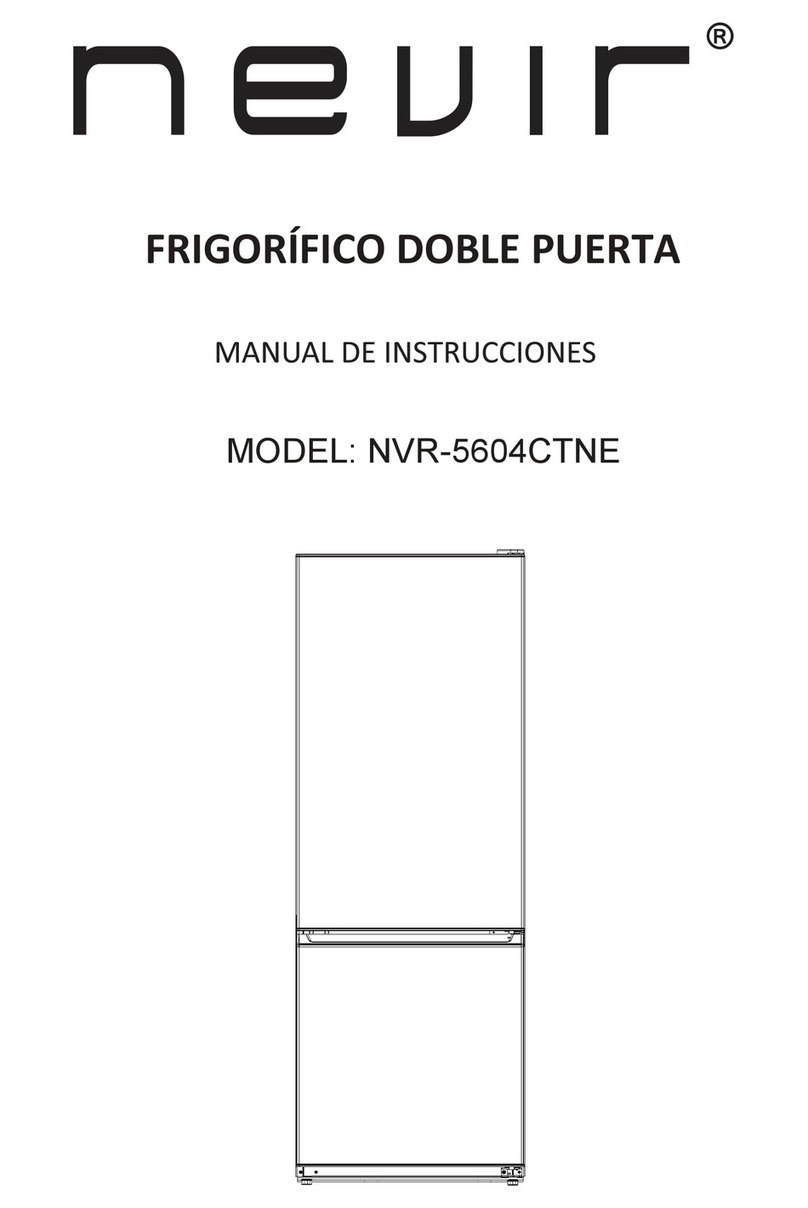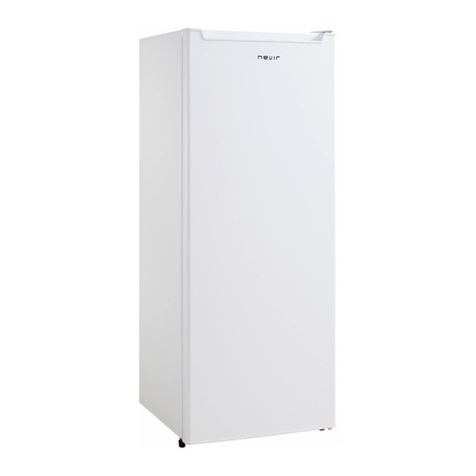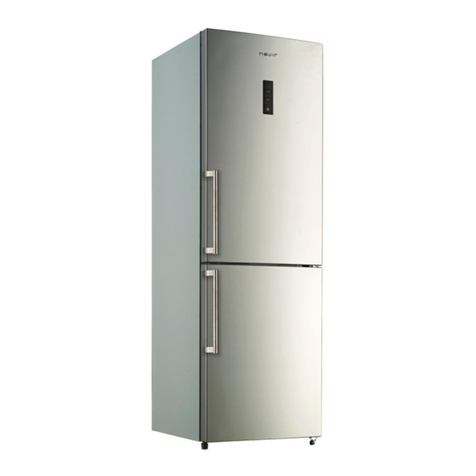
IMPORTANT SAFETY INSTRUCTIONS
To reduce the risk of fire, electrical shock, or injury
follow these basic precautions when using your
refrigerator.
1) WARNING----Keep ventilation openings, in the appliance enclosure or in the built-in structure,
clear of obstruction.
2) WARNING----Do not use mechanical devices or other means to accelerate the defrosting
process, other than those recommended by the manufacturer.
3) WARNING----Do not damage the refrigerant circuit to increase the risk of a leak when handle,
move, clean and use of refrigerator.
4) WARNING----Do not use electrical appliances inside the food storage compartments of the
appliances, unless they are of the type recommended by the manufacturer.
5) WARNING----DANGER: Never allow children to play with, operate, or crawl inside the
refrigerator. Risk of child entrapment. Before you throw away your old refrigerator or freezer:
Take off the doors
Leave the shelves in place so that children may not easily climb inside.
6) The appliance has to be unplugged before carrying out user maintenance on the
appliance.
7) This appliance is not intended for use by persons (including children) with reduced physical,
sensory or mental capabilities, or lack of experience and knowledge, unless they have been
given supervision or instruction concerning use of the appliance by a person responsible for
their safety. Children should be supervised to ensure that they do not play with the appliance.
Cleaning and maintenance should not be made by children without supervision.
8) If the SUPPLY CORD is damaged, it must be replaced by the manufacturer, its service agent
or similar qualified persons in order to avoid a hazard.
9) Please abandon the refrigerator according to local regulations as the unit contains flam
mable blowing gas and refrigerant.
10) Follow local regulations regarding disposal of the appliance due to flammable refrigerant and
blowing gas. All refrigeration products contain refrigerants, which under the guidelines of
federal law must be removed before disposal. It is the consumer's responsibility to comply
with federal and local regulations when disposing of this product.
11) This appliance is intended to be used in household and similar environments; such as:
staffkitchen areas in shops, offices and other working environments;
farm houses and by clients in hotels, motels and other residential type environments;
bed and breakfast type environments;
catering and similar non-retail applications.
12) Do not store or use gasoline or any inflammable liquors and liquids inside or in the vicinity of
refrigerator.
13) Do not use extension cords or ungrounded (two prong) adapters with this appliance. If the
power cord is too short, have a qualified electrician install an outlet near the appliance. Use of an
extension can negatively affect the performance of this appliance.
